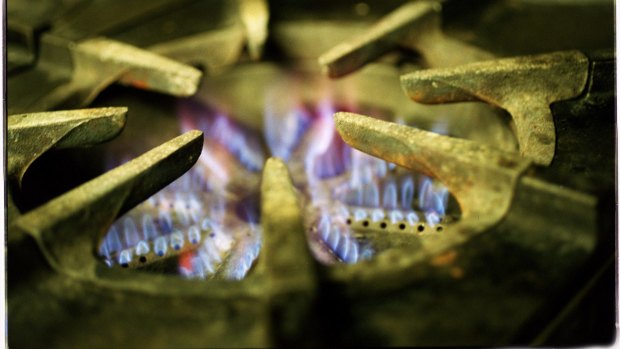By Benjamin Preiss and Nick Toscano
The Andrews government will consider lifting its ban of onshore natural gas drilling next year to tap potentially large quantities of gas in Victoria’s Otway Basin for commercial and household use.
The potential for untapped gas resources has raised hopes of some future relief for households and businesses battling prices that have surged as high as $12 a gigajoule – three times above historic levels.

A moratorium on onshore gas exploration in Victoria could end next year.
Business leaders have been calling for an expansion of gas extraction in Victoria, pitting them against environmentalists who say that expanding the gas sector will drive up carbon emissions.
The latest progress report on Victoria’s Gas Program comes as the government prepares to decide whether to lift its moratorium on conventional or natural onshore gas exploration by the end of June next year.
However, the report found that further research is required to determine whether there is a more definite indication of gas supply in the Otway Basin.
“Parts of the Otway Basin have rock formations with the right characteristics and in the right sequence to potentially host conventional gas,” the report said.
The government agency Geological Survey of Victoria is also assessing whether sections of onshore underground rock in the Gippsland Basin may also host gas.
The state ban on unconventional drilling including "fracking"– the practice of injecting large volumes of water, sand and chemicals into underground shale rock at high pressure to force the extraction of gas – is banned indefinitely.
About 1.8 million Victorian households use gas to heat their homes and run appliances. The state consumes 200 petajoules of gas a year for domestic and industrial use.
Victoria’s Otway Basin covers 155,000 square kilometres, with 80 per cent located offshore.
The Gippsland Basin is also onshore and offshore and covers 46,000 square kilometres.
The latest study also examined the potential for underground storage of gas so that it can be extracted when needed most.
Study methods included extensive aerial surveys, rock samples and three-dimensional modelling in the Otway Basin.
Resources Minister Jaclyn Symes said the Victorian gas program used world class technology to gain a clear picture of the state’s gas resources.
“In the past we have seen dramatic swings in predictions of gas availability and potential resources – this program puts an end to the guesswork and will use evidence as the basis for important decisions,” she said.
Government departments are assessing bids for further offshore gas exploration in state waters off south-west Victoria.
The state government’s head of resources, John Krbaleski, said the gas program had assessed onshore conventional gas potential, while identifying further offshore gas exploration and possibilities for underground gas storage.
“Next year will be an important one for the future of onshore conventional gas exploration and development, we’re on track to deliver the findings required to assess the current moratorium,” he said.
But Environment Victoria describes gas as a major contributor to climate change.
The group’s chief executive, Jono La Nauze, said the Victorian gas program had been allocated a budget of more than $40 million, which would be better used helping households and businesses switch to technologies using renewable energy to heat buildings and water.
“Gas is a leading contributor to climate change and the Victorian Gas Program is completely at odds with the Andrews government’s commitment to reduce Victoria’s greenhouse emissions in line with our fair share of the Paris agreement,” he said.
But Energy Users Association of Australia chief executive Andrew Richards said manufacturers were struggling under the cost of energy and some openly blamed gas prices of up to $12 a gigajoule – more than three times above historic prices – for the closure of factories in Victoria and New South Wales.
"We need more supply from more suppliers to bring more gas to market and create more pressure on pricing," he said. "Any gas price in excess of $10 is effectively the death zone for a lot of manufacturers and producers and many have been operating in that $10 dollar-plus death zone now for a couple of years, just hanging on. If they see there is light at the end of the tunnel – and the lifting of the moratorium could be part of that – you might see some hanging on a bit longer.”
If the conventional gas moratorium was to lifted, he said, there would need to be strong "checks and balances" on environmental protections and to ensure gas producers did the right thing by local communities and landowners.
The Australian Petroleum Production and Exploration Association, which represents the nation’s largest gas producers, wants to lift the moratorium, saying there is no scientific basis to justify it.
The association’s chief executive, Andrew McConville, said Victoria had a long-standing requirement for more natural gas.
“Lifting the moratorium won’t be an immediate fix for natural gas supply to Victoria,” he said. “Exploration and quantifying the volume of any prospective commercially viable resource requires significant investment by companies of time and infrastructure.”